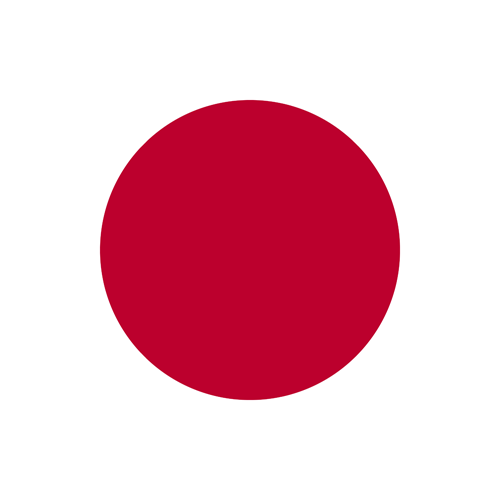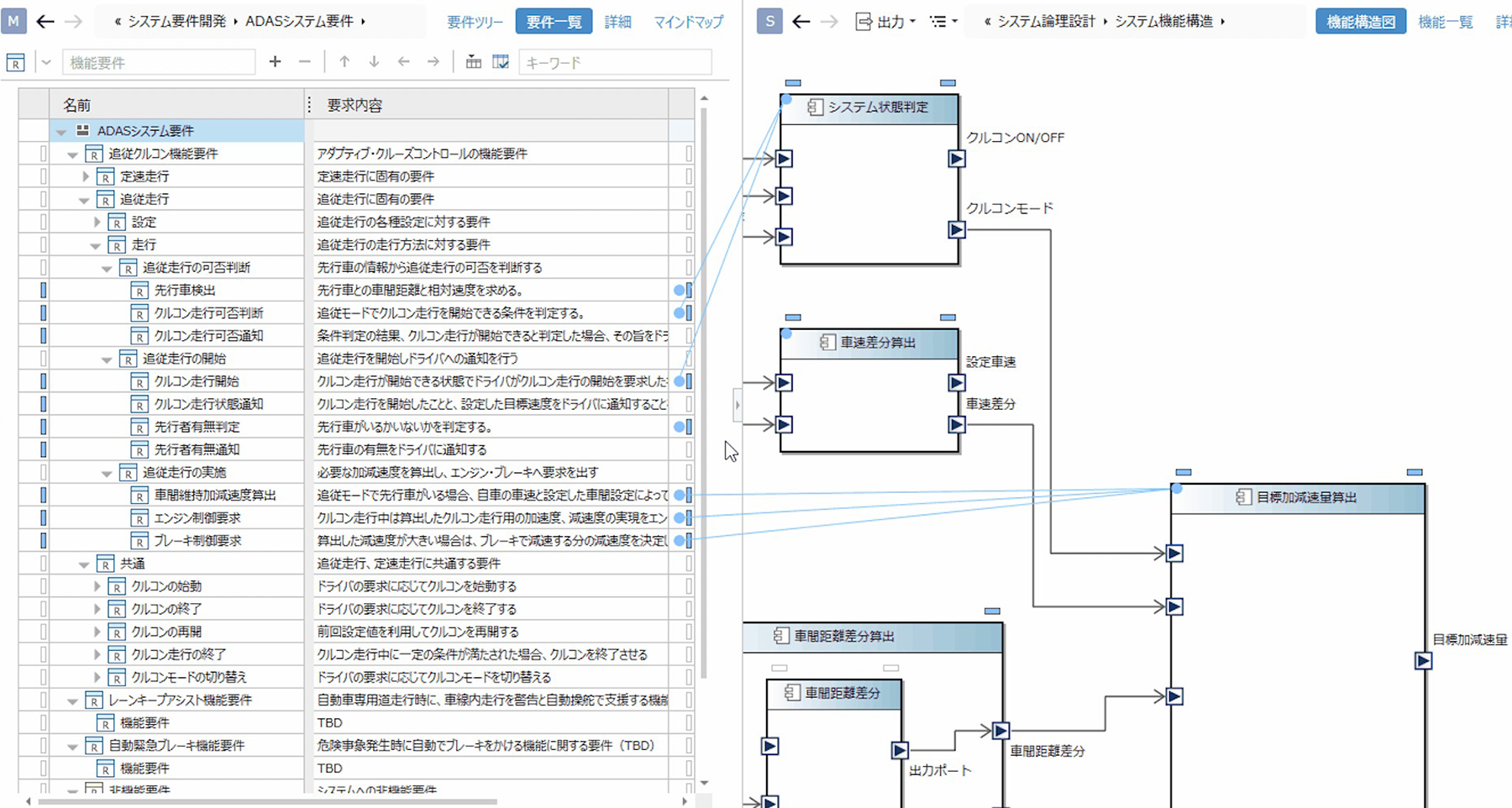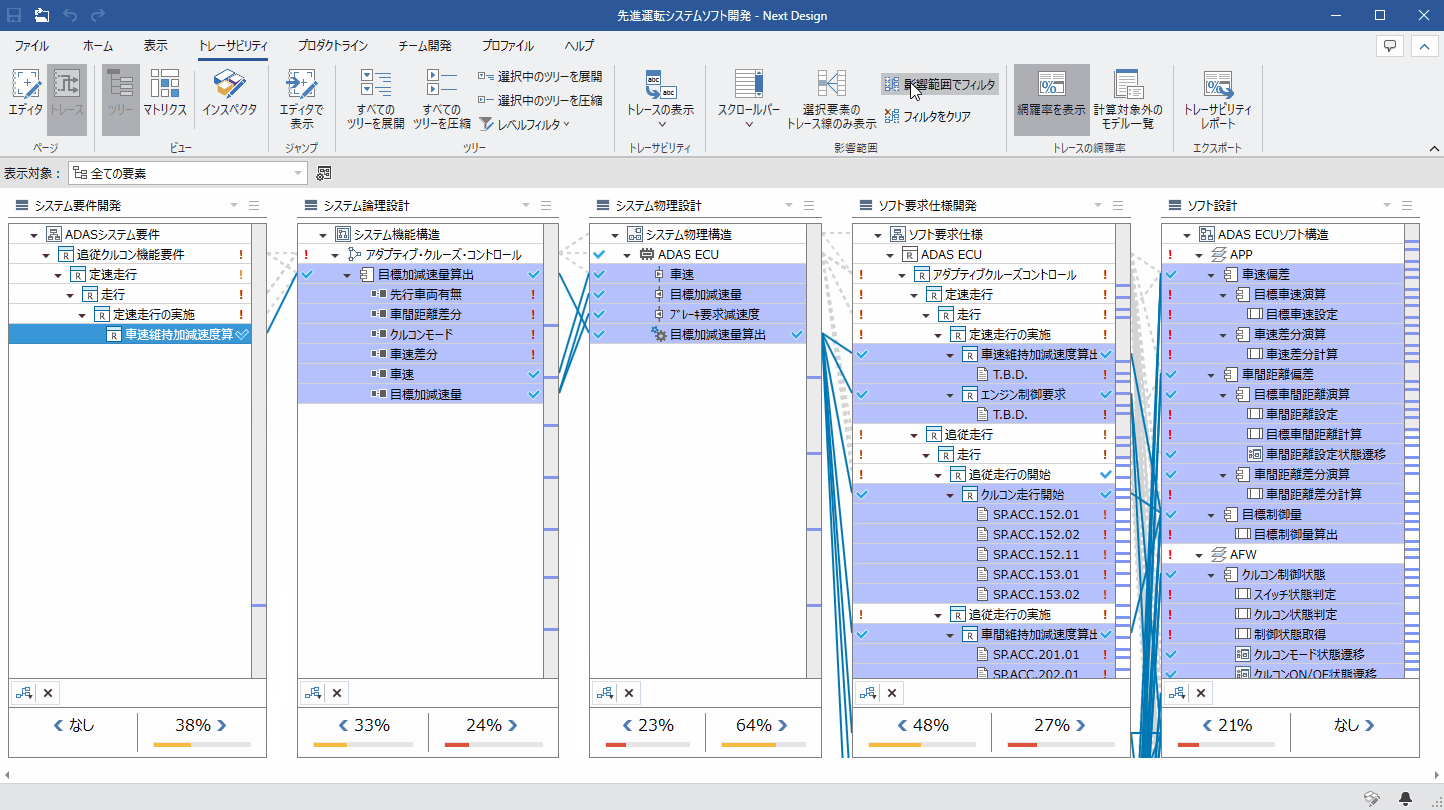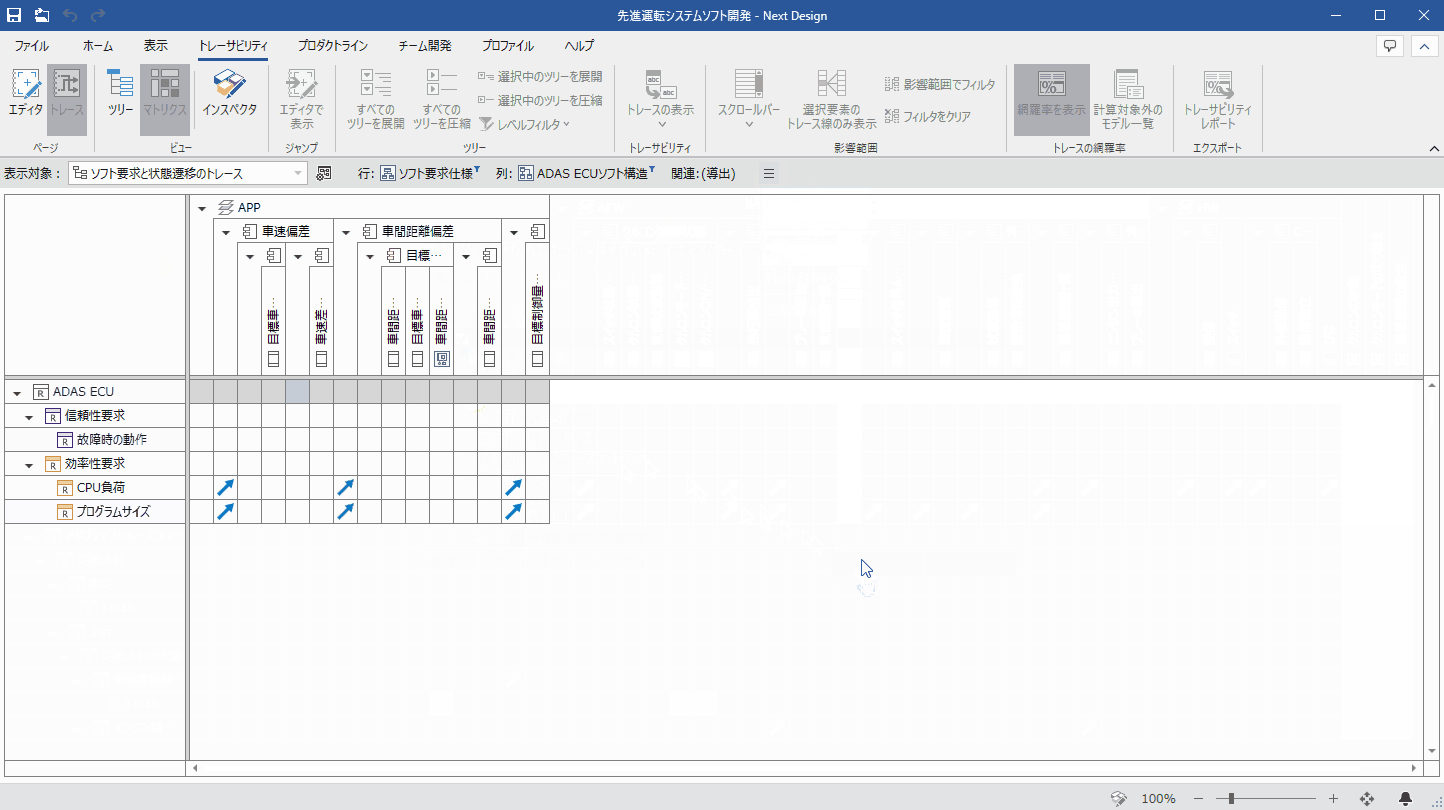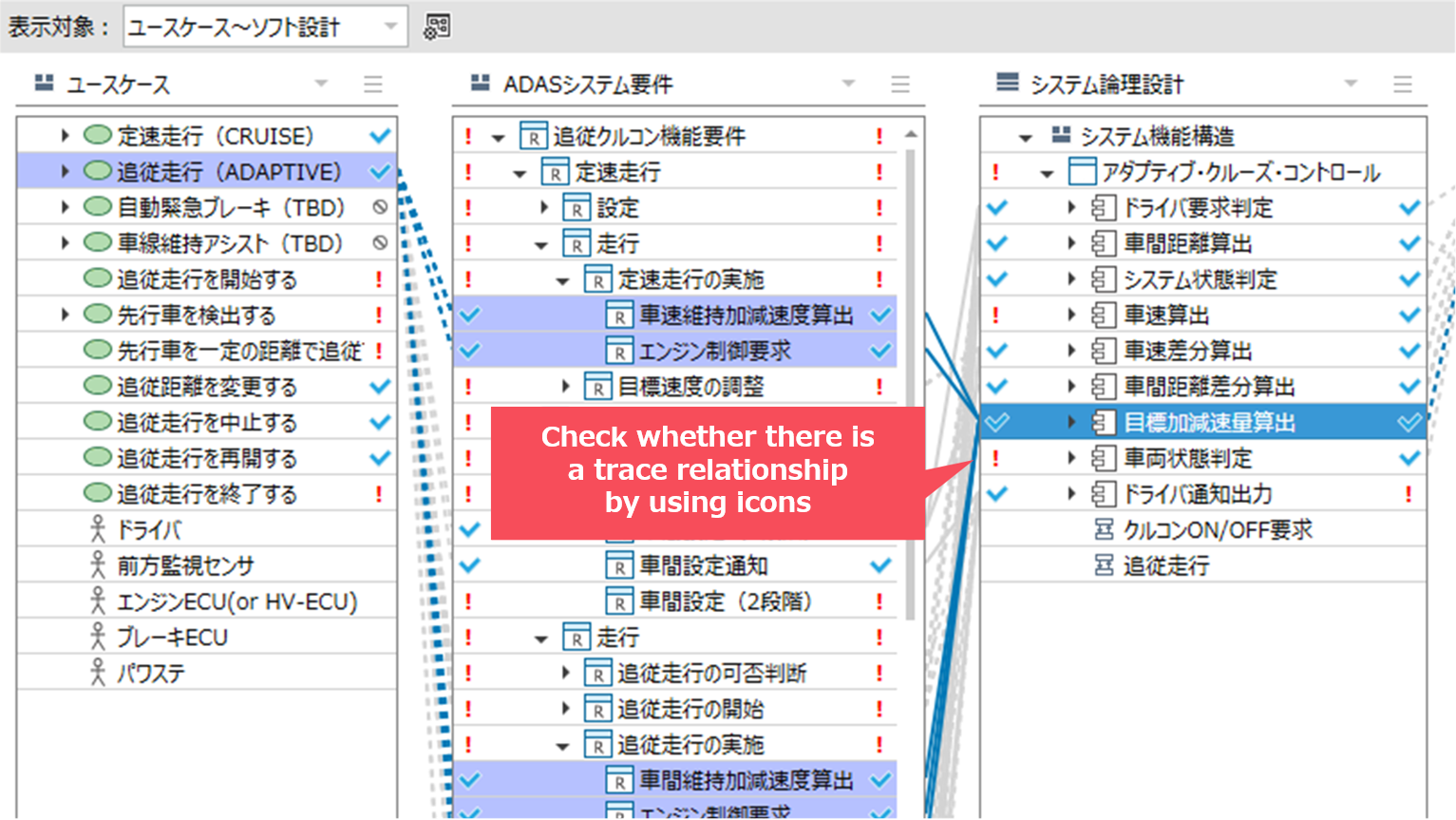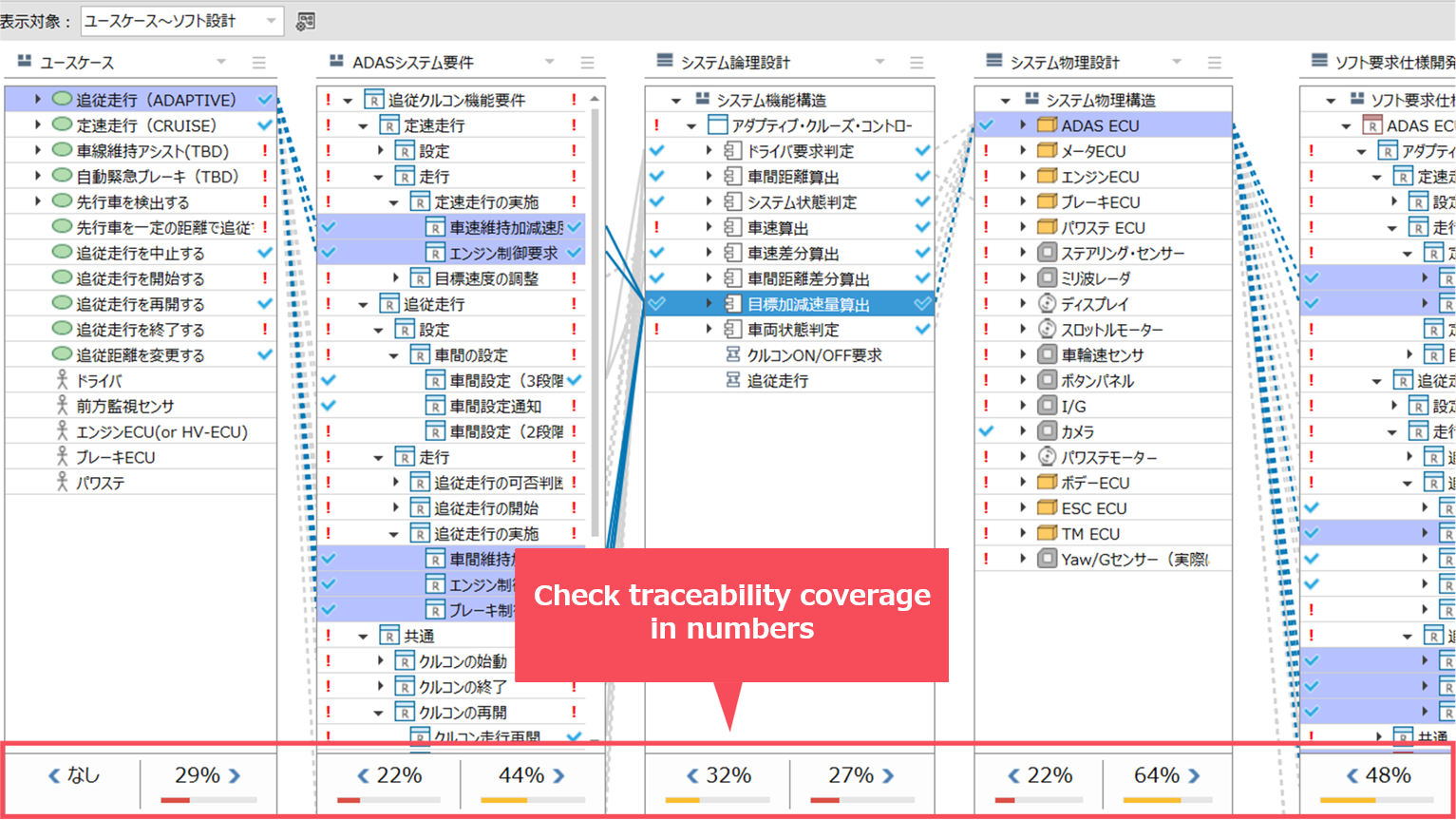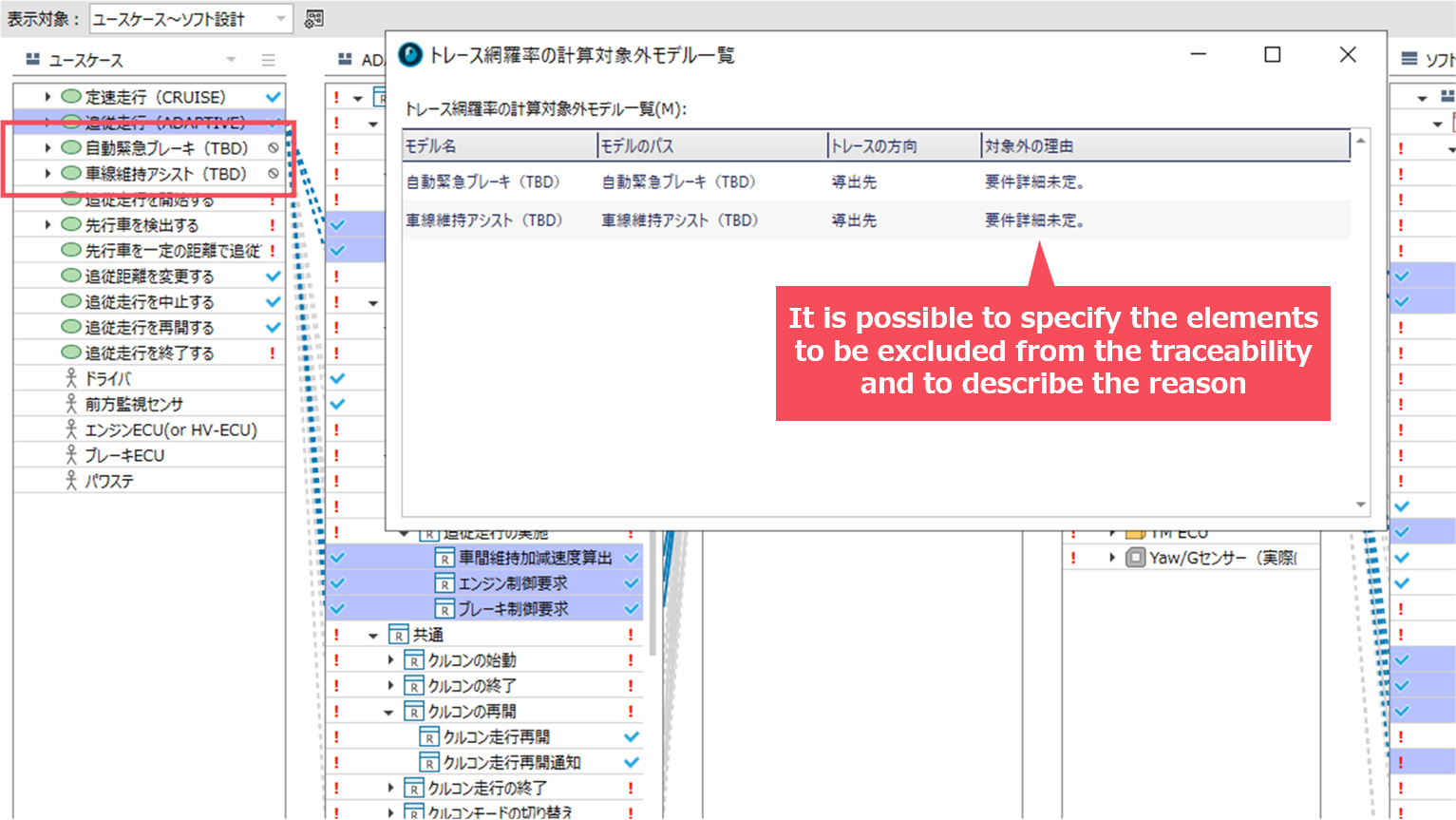Traceability is an effective way to ensure quality in the development of high quality systems and software.
Next Design is equipped with traceability management functions comparable to those of dedicated tools.
This means that you can naturally ensure traceability as you design, reducing the need to re-establish traceability after the design is complete and improving the process.
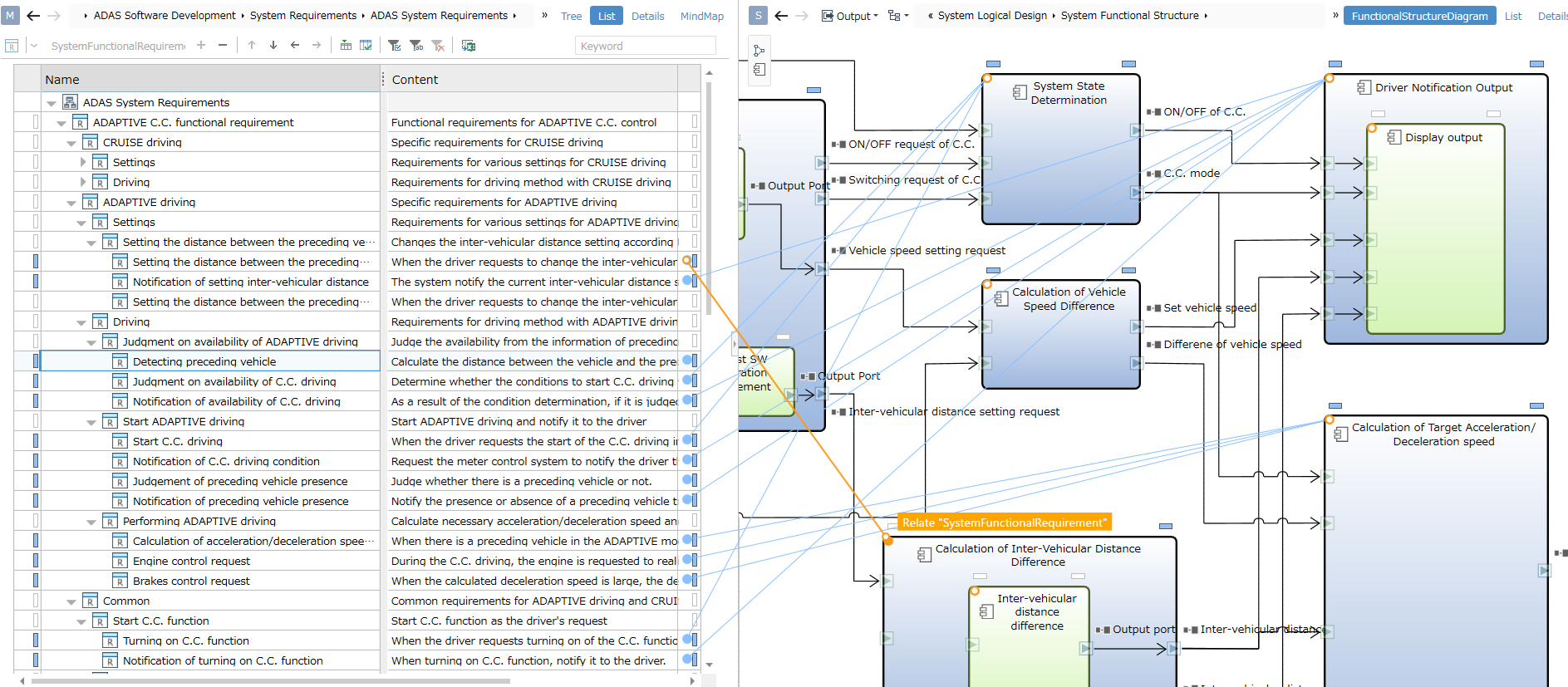
-
Traceability and design tools combined
THE TRACEABILITY RECORDS THE TIES OF WHERE THE UPSTREAM SPECIFICATION AND DESIGN IS REALIZED AS IT IS. IN PARTICULAR, THERE IS NO NEED TO RUN A SEPARATE TRACEABILITY TOOL, ALTHOUGH THERE IS A FILL-IN OF THE DESIGN DOCUMENTS FOR ACCOUNTABILITY PURPOSES, SUCH AS ISO 26262, WHICH IS REQUIRED BY THE EMBEDDED SOFTWARE INDUSTRY.
Next Design not only visualises design results, but also supports the design process itself by combining traceability. For example, by simply dragging and dropping relevant information from requirement to design, traceability is recorded.
-
Dedicated display for traceability at a glance
Recorded traceability can be listed on a dedicated lane display. The processes displayed in the lanes can be customized. The traceability of all processes can be listed, or only specific processes can be displayed.
When selected, the relevant design information is highlighted, so you can see at a glance the extent of the impact. Traceability becomes "something you use".
-
View and edit traceability in matrix format
Traceability can be displayed as a matrix in addition to a tree. The unique traceability matrix screen is designed to work with large volumes of design data such as thousands by thousands, making it ideal for large scale software development. The traceability matrix also allows users to edit trace relationships with the click of a mouse.

